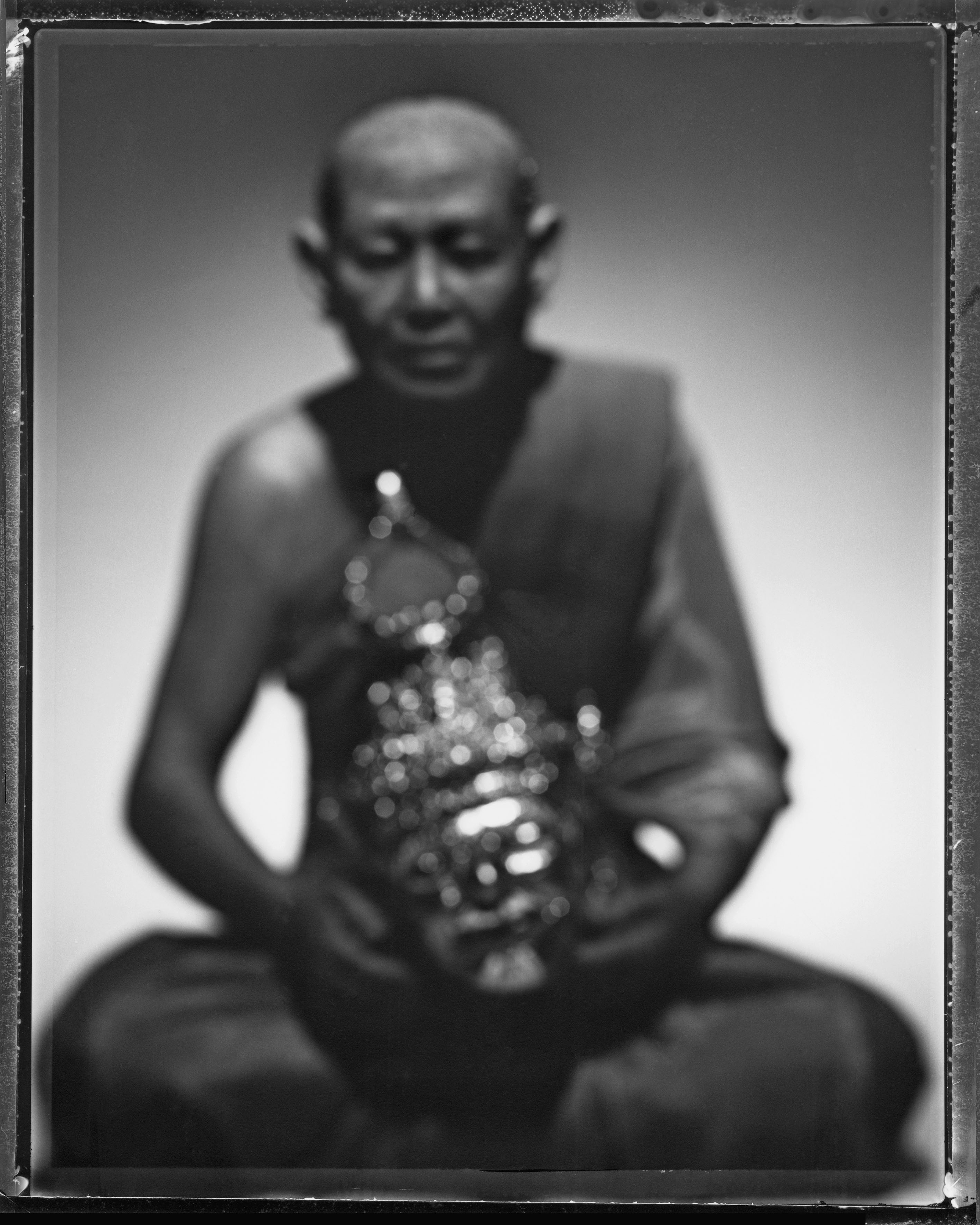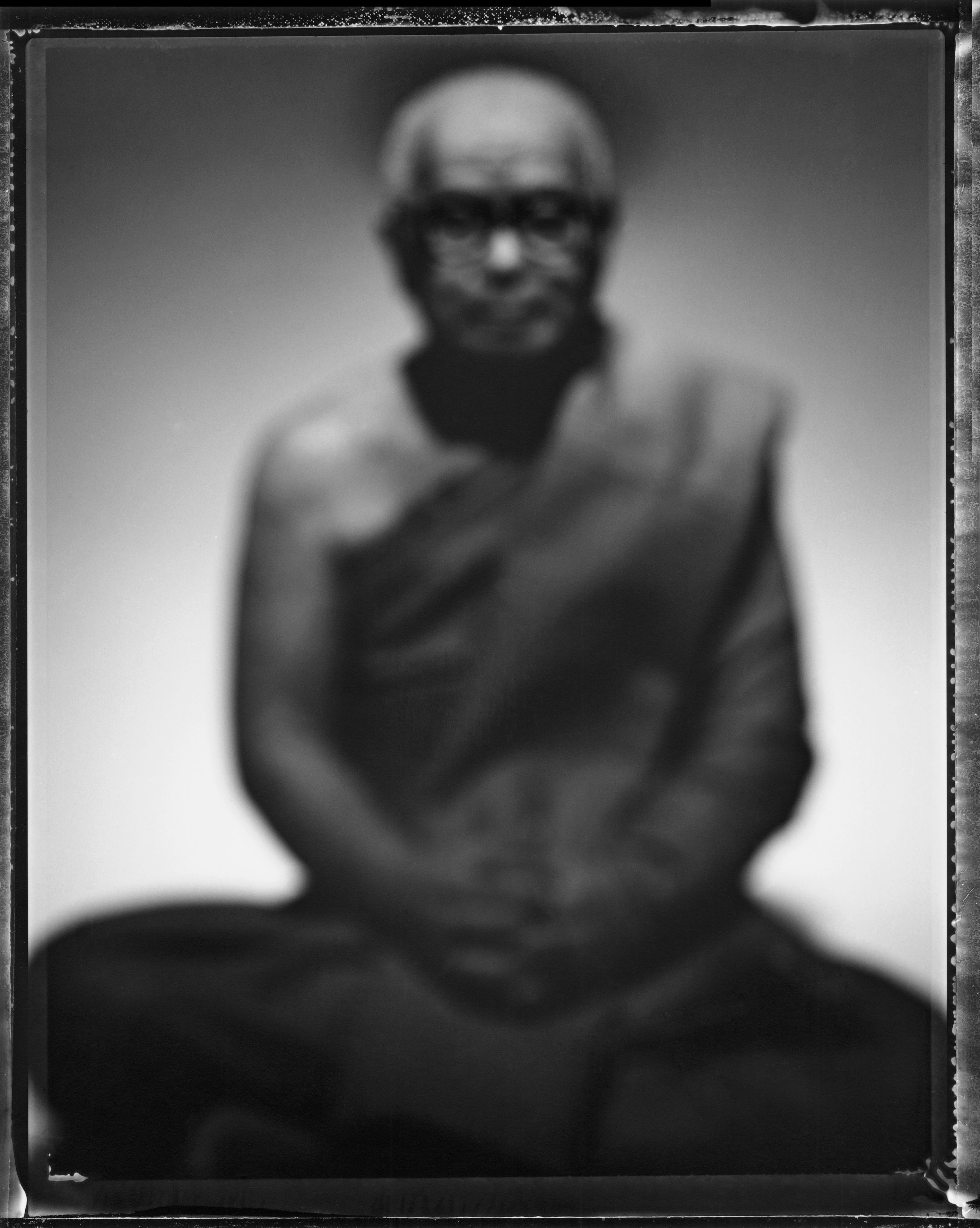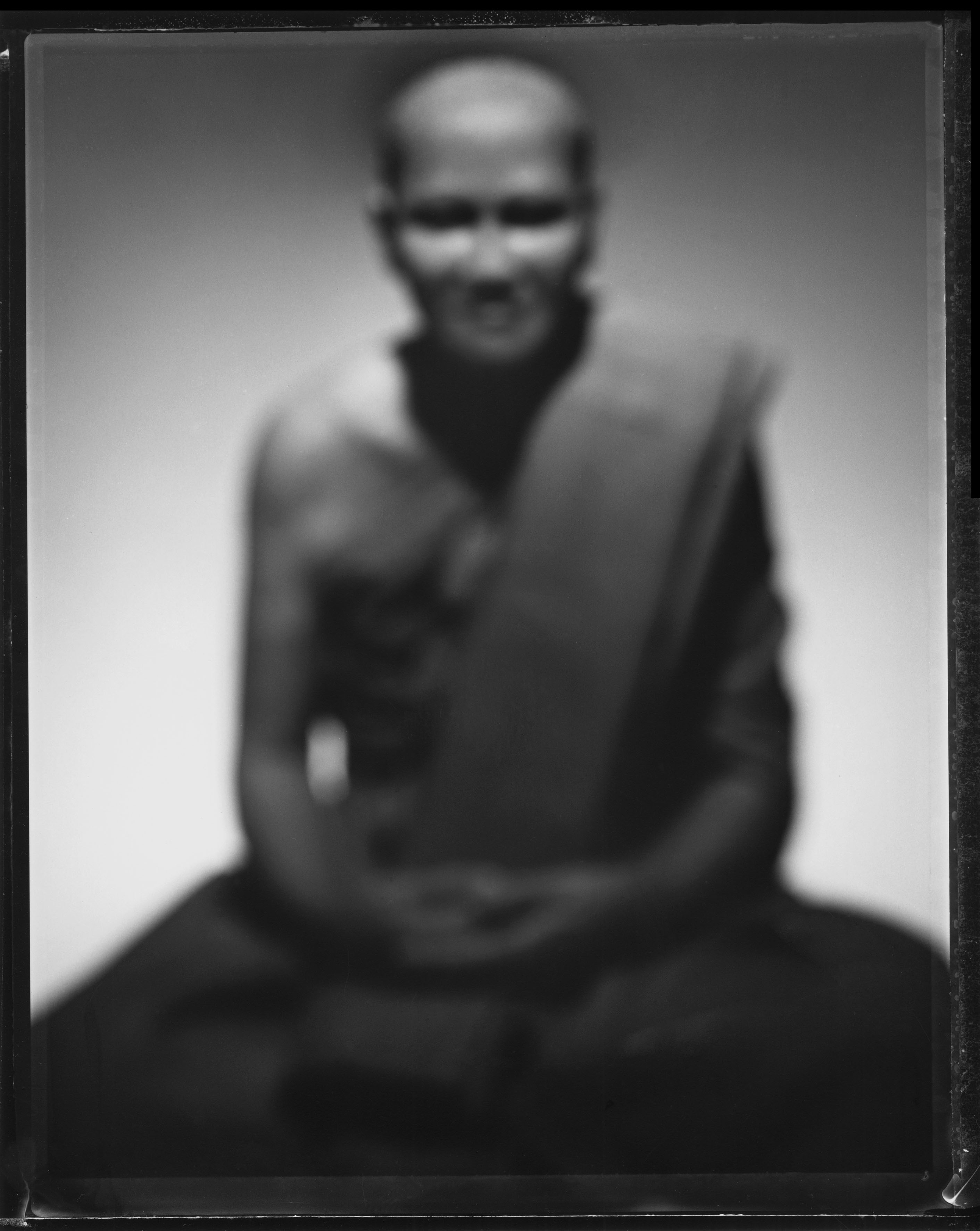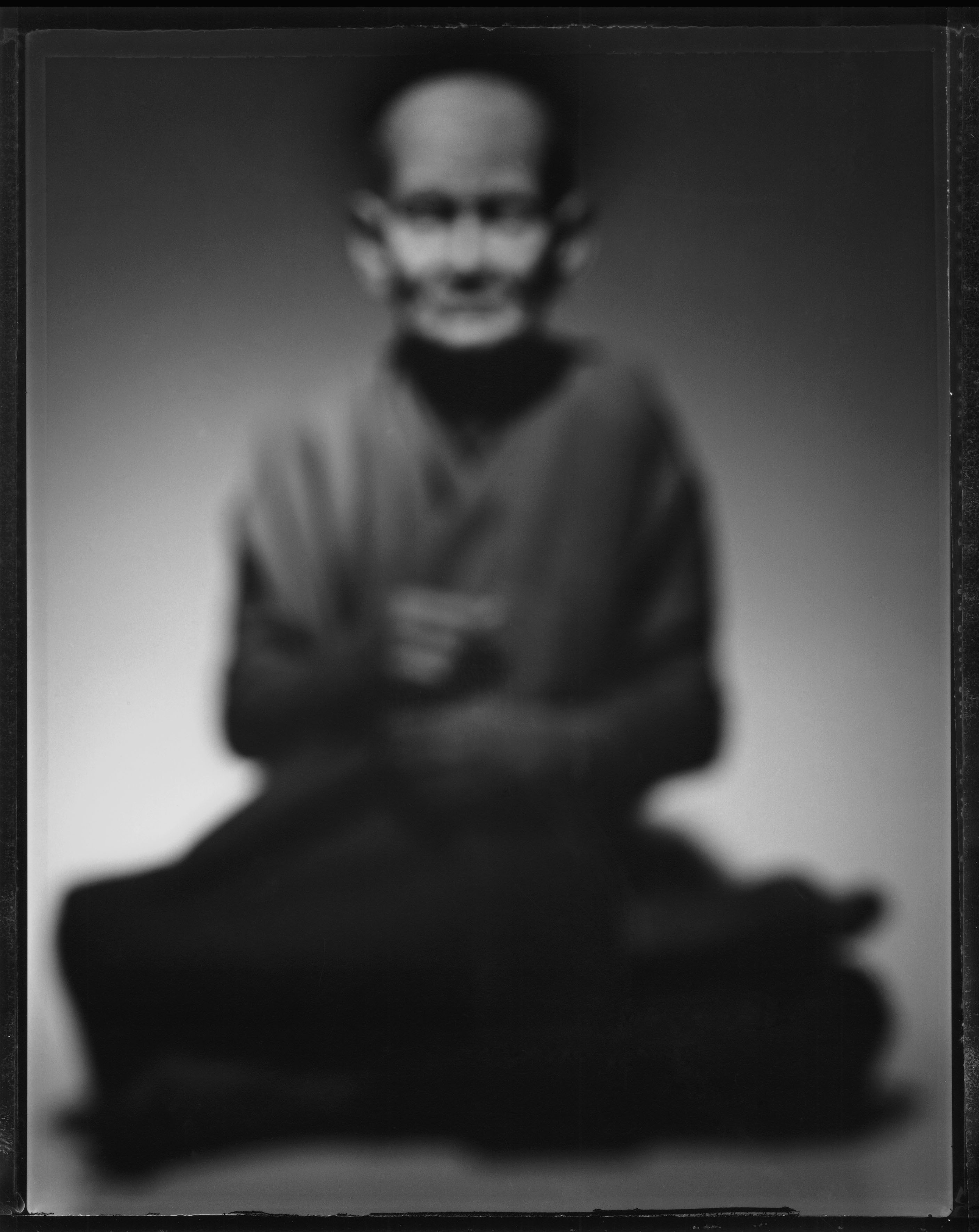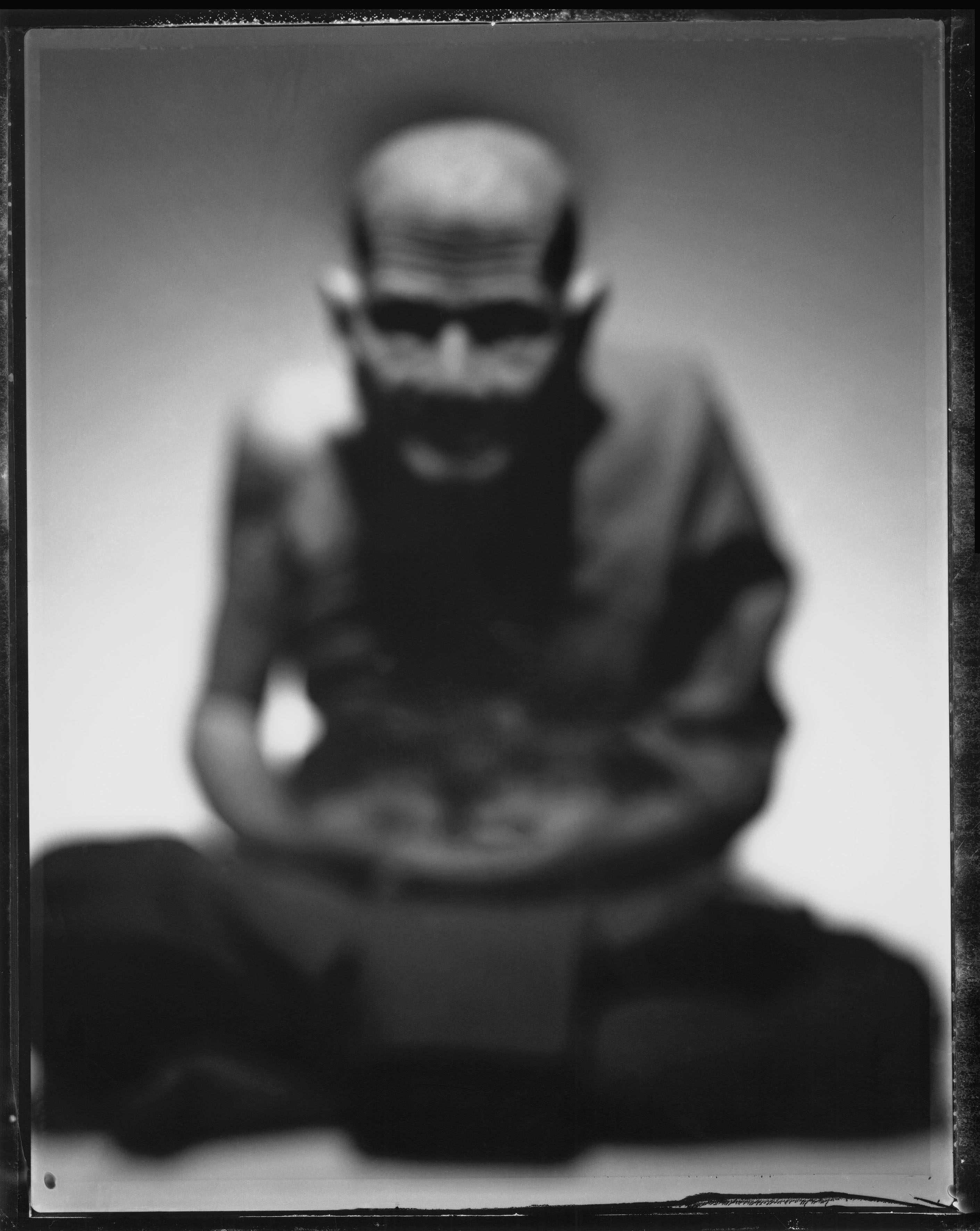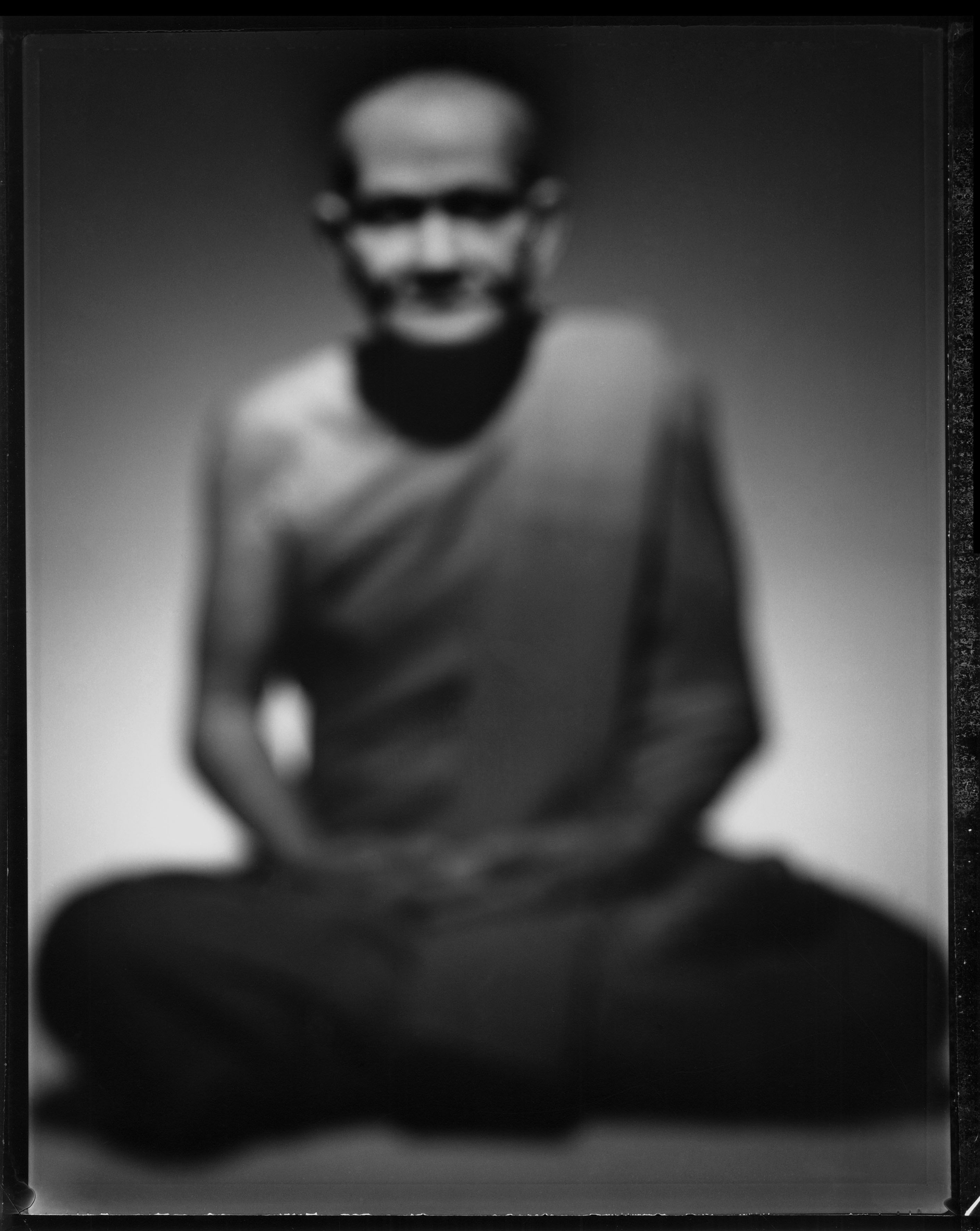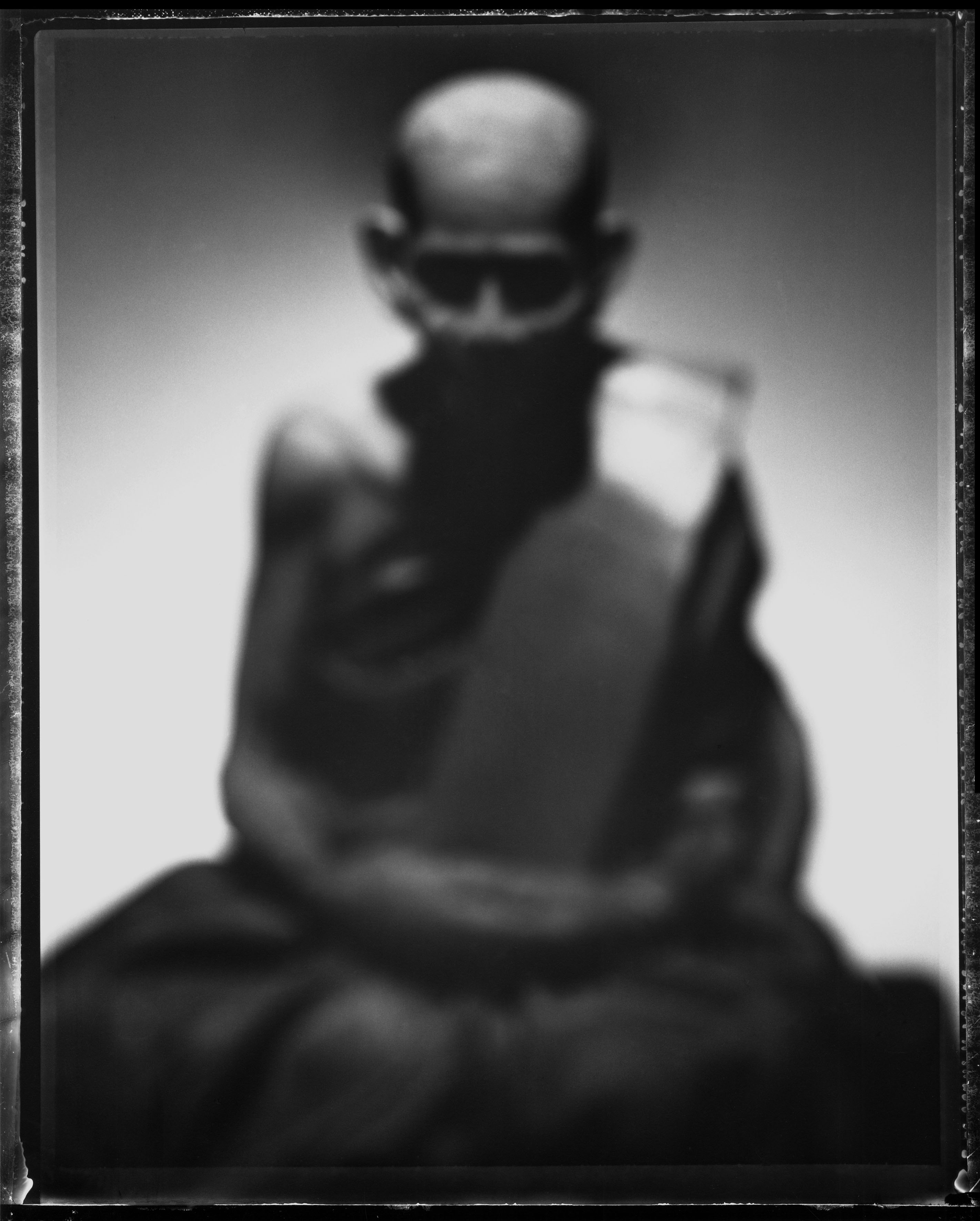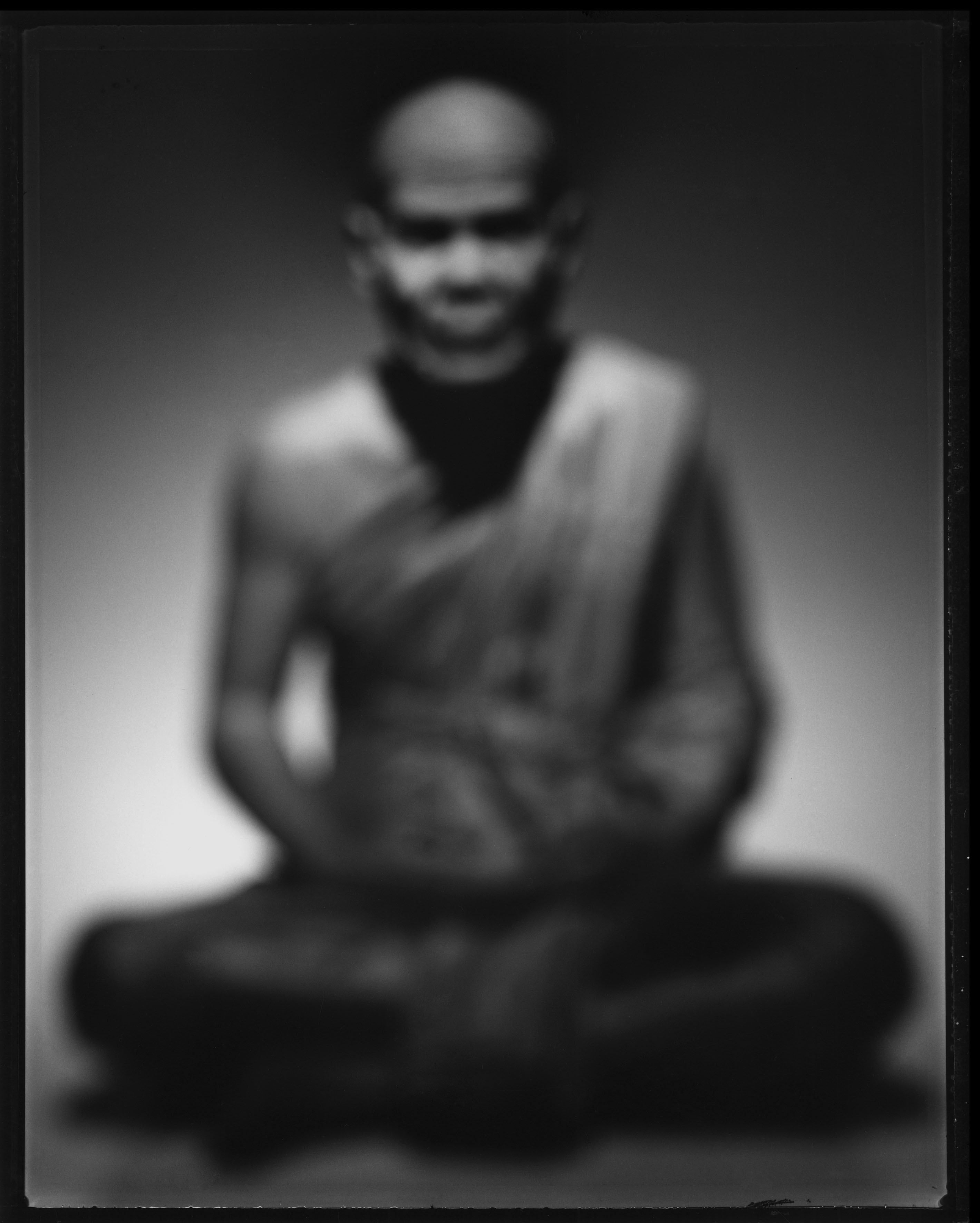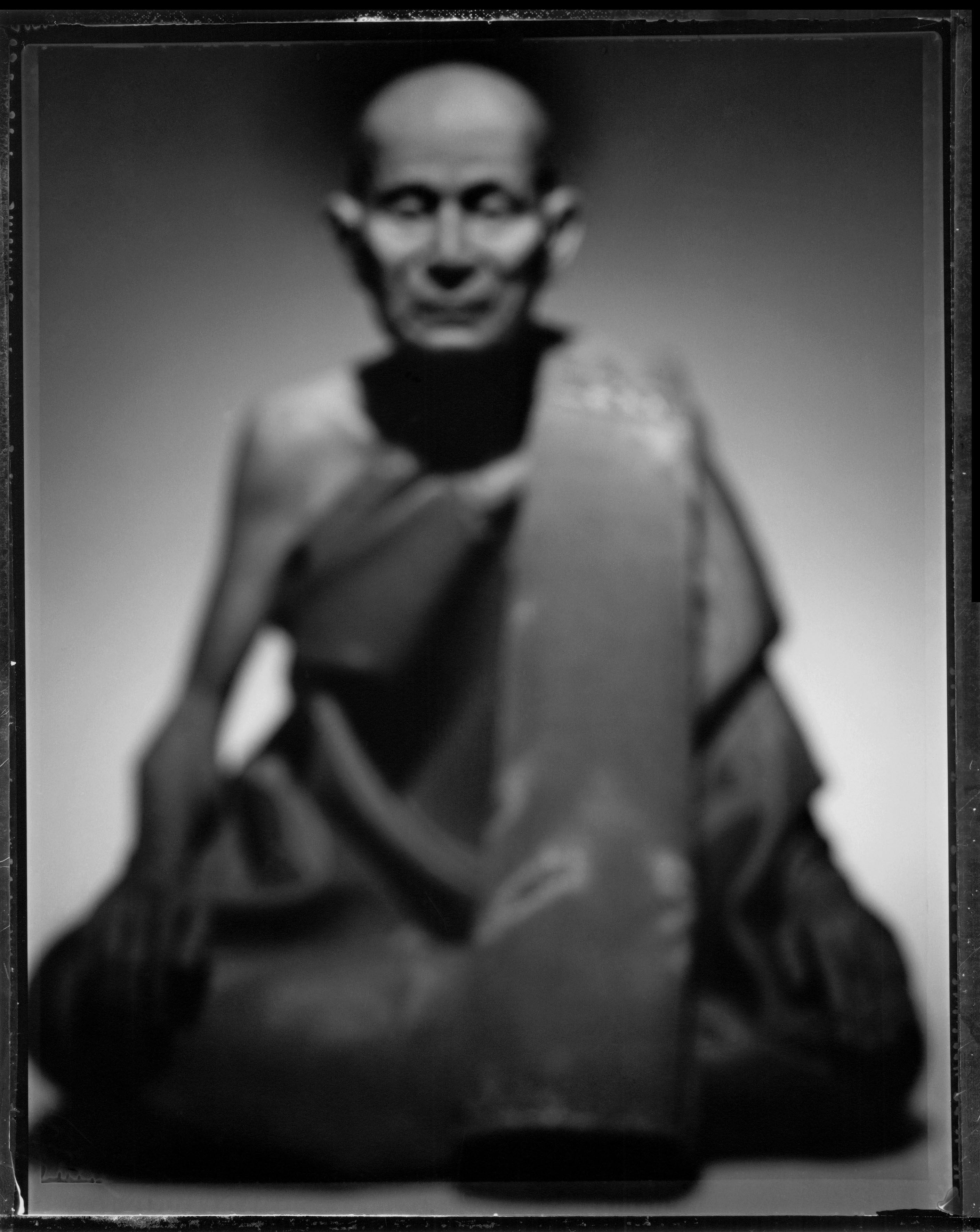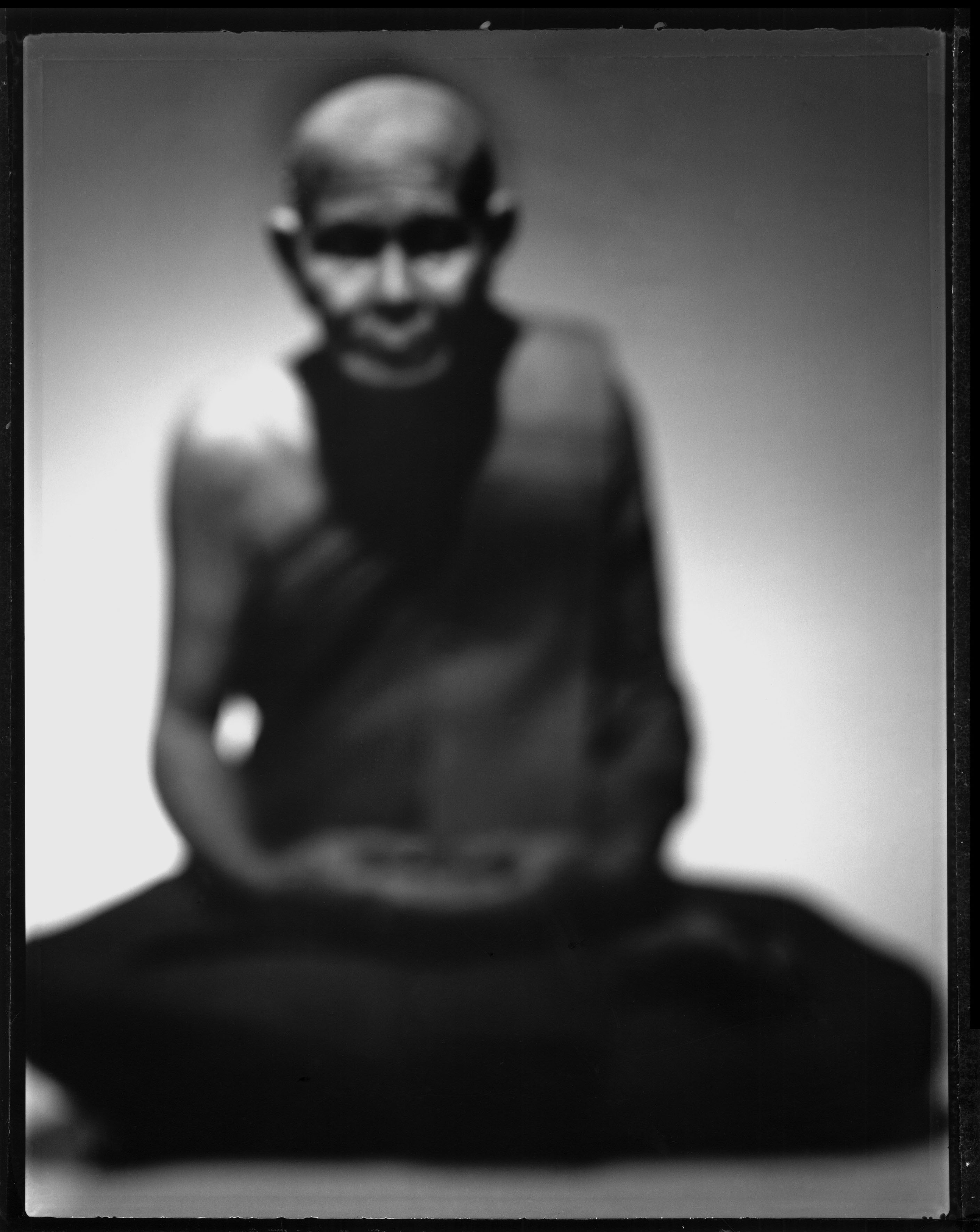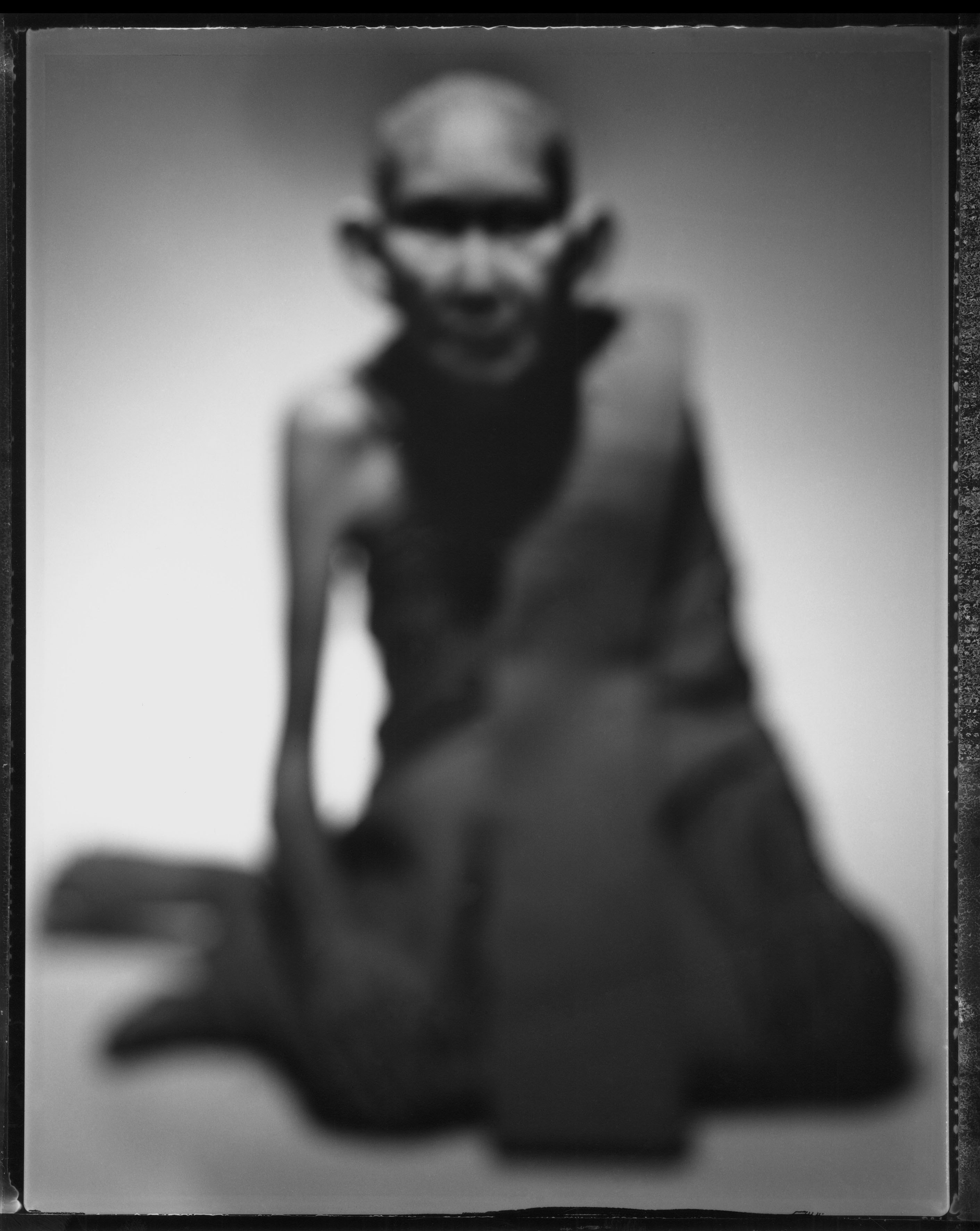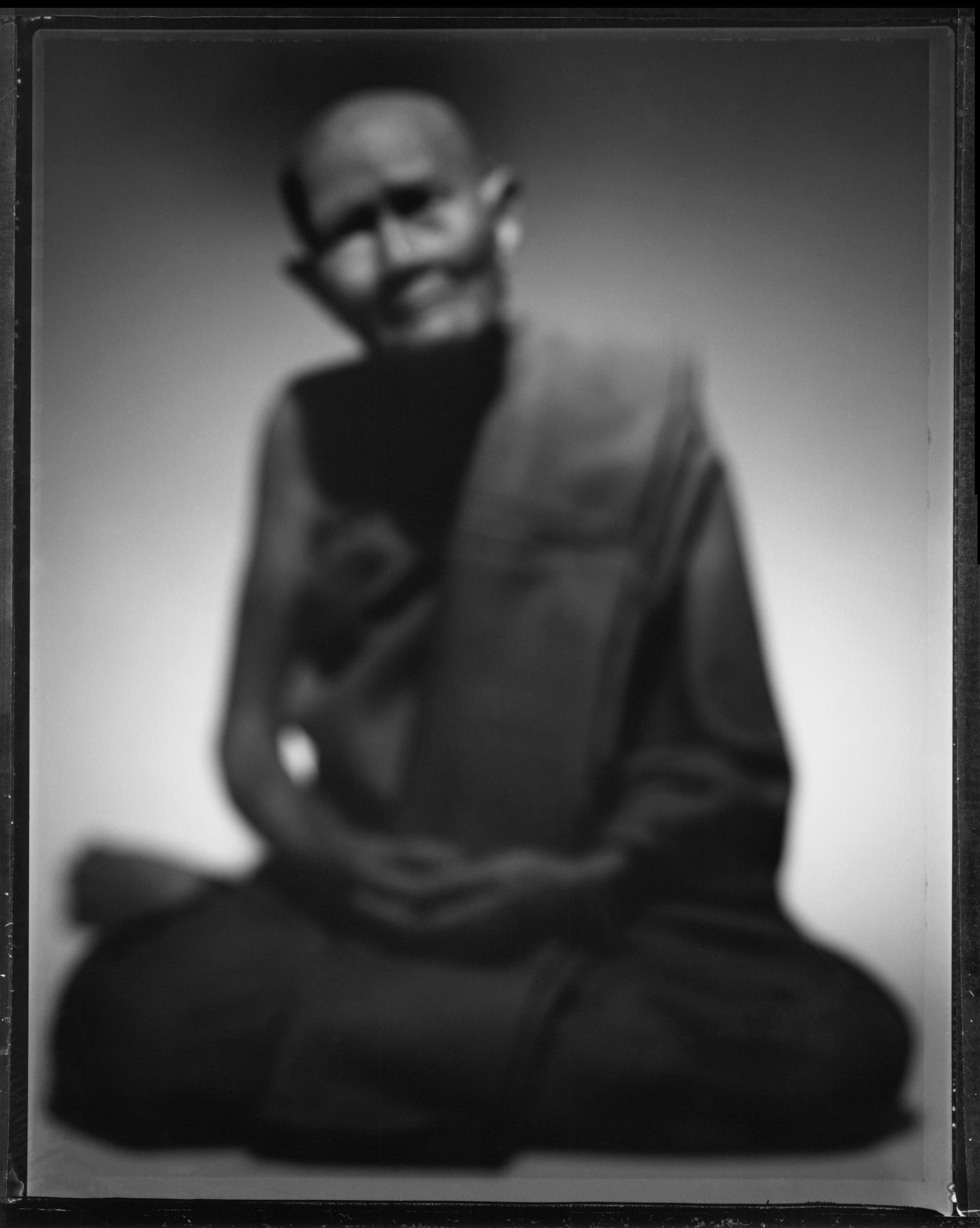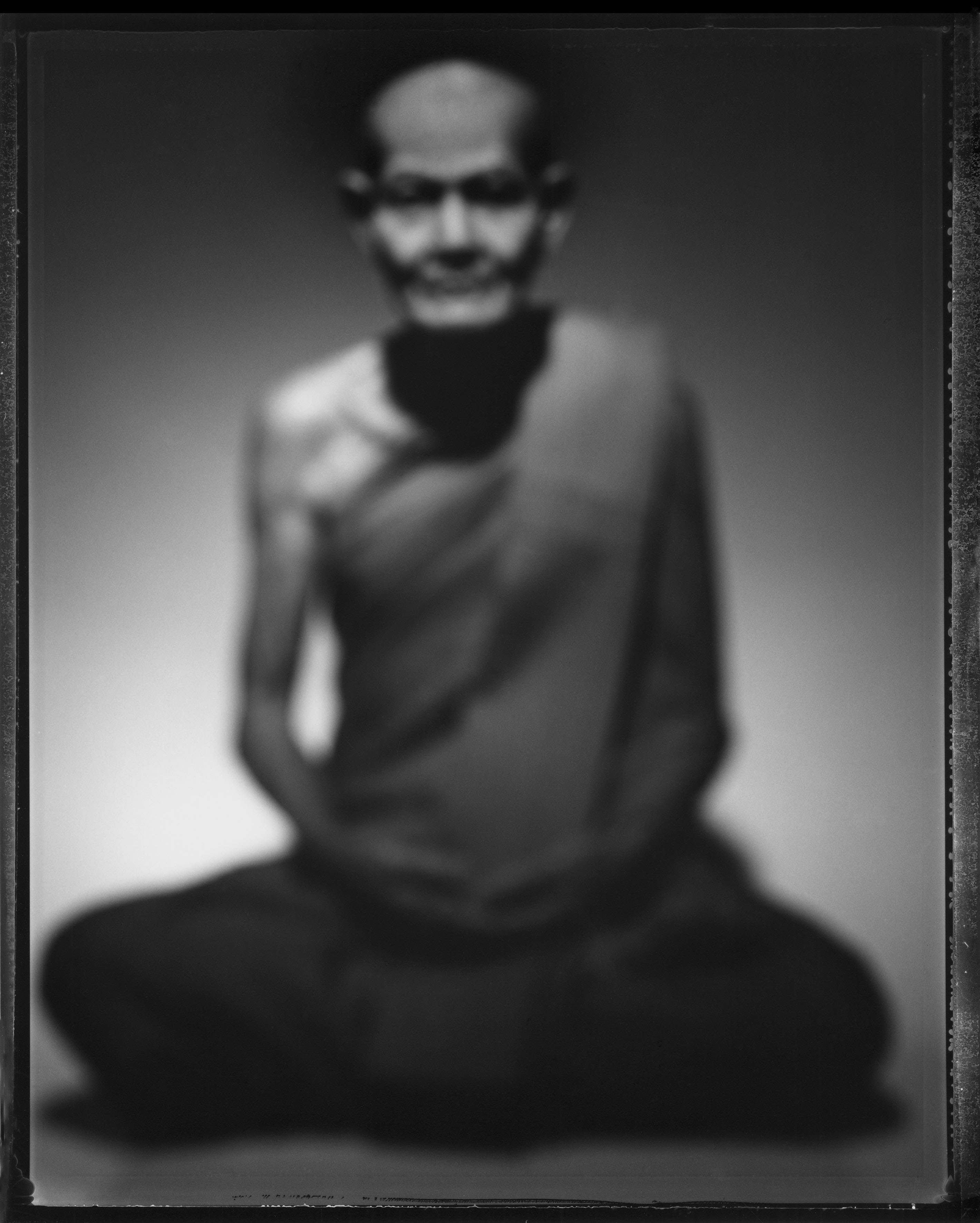Thailand, Masters, 2009
“Held up at a red light one day while driving past religious icon shops around the Giant Swing in Bangkok, I noticed two life-sized statues of monks. One depicted Lhuang Por Toh Brahmarangsi (Holy Father Toh, King’s Mongkut’s guru, 1788-1872) of Rakhang Temple ; the other protrayed Lhuang Pu Tuad (Holy Grandpa, circa 1582-1662) of Chang Hai Temple.
The sight made my skin crawl. They were like living flesh. As if these revered monks had risen from the dead to sit there by the road, to demonstrate their meditation prowess to passers-by.
The creepy feeling deepened when I saw the glass display-case behind them, filled with 30cm-high replicas of yet more famous monks. These resin miniature humans had been made so life-like by their thai craftmen, they rivaled Madame Tussaud’s famous wax figures of celebrities.
Yet one more step by Thai Buddhist commerce in its manufacture of « sacred icons », deftly copying and appropriating the Western celebrity cult for the Thai ecclesiastical world an its attendant amulet business.
No one knows when the worship of sacred icons of individual Buddhist masters began. In ancient days we worshipped Buddha statues as a symbol of our great techer and his teachings. The Buddha statue represents a concept rather than an indiviual. Worship of Masters emphasizes specific people and their reputed magical powers for worldly blessings, in direct contradiction to the Buddha’s message of self-reliance and to focus only on the teaching itself.
The more advanced the marketing and production techniques, the more intricate and fantastical their products, it seems to me, the further we travel from Buddha. Our vision becomes blurry, nothing is clear, including when we look to these holy masters.”
Manit Sriwanichpoom
